Throughout my career, I’ve always said that “no two springs are the same”. While indeed correct, this is truly an understatement concerning the spring of 2020. This Covid pandemic has changed us and the way we do things. It will also affect what we do in the future while taking us to a new normal, the extent of which remains to be seen. I just hope that, in the end, people emerge from this appreciating the simple things again such as plants, flowers and nature in general. It’s amazing what plants can do to make one feel good. As vacations are cancelled and families are forced to stay home, the appreciation for plants and nature in general will take on renewed importance in the lives of many, hopefully on a permanent basis. I’m hoping that we’ll now take a break, slow down and be kinder to the environment and to one another as we move forward.
I know you all were forced to respond to this in many different ways regarding the closing of schools, initiating on-line classes, conducting plant sales, etc. Even within states, school districts varied drastically in their responses regarding staff access including, in your case, greenhouse upkeep and plant sales. Some of you were forced to dump your plants and others were allowed to follow through with your plant sales with limitations and special precautions in place. Many initiated a digital ordering system where plants were presold and set aside for customer pick-up. Others had more traditional plant sales with personal distancing set in place. Some offered to wholesale plants to local garden centers and retailers. Some donated everything to community efforts. It was both interesting and inspiring to see how this situation was handled across the country.
One thing that I did notice throughout all of your correspondence was the determination to make any and all efforts necessary to find a home for the plants. Of course, it didn’t work out for some. Some of you bent rules to keep plants and hope alive as others were given more freedom. And, of course, all while working from home, often with your own kids underfoot needing attention and guidance at the same time. What a year! You all amaze and inspire me. Thanks to all of you who shared.
Connecting the Dots – Soil, Water, Fertilizer & Nutrition
As is usual in spring growing seasons, I received quite a few calls and emails pertaining to insects and nutritional concerns. Growing is indeed a challenging vocation. The plant breeders as well as soil, chemical and fertilizer manufacturers all do what they can do make our job easier by providing ready-to-use, quality products to help us be successful. For this reason we can often get away with being a bit complacent (aka: “busy”) especially in the chaotic, overlapping worlds of work and home that we now live in. Plants are bred to grow better, stronger and with more flower-power while, at the same time, being more resistant to diseases, poor weather and less-than-favorable growing conditions. Better quality growing mixes provide mediums that buffer against the higher pH of most waters. Fertilizer manufacturers put together a feed package where all we have to do is basically add water. This is all great but can cause us to sometimes forget how the soil, water, fertilizer and the choice of plants all work together to produce a successful crop. We then risk not knowing what is taking place when problems develop.
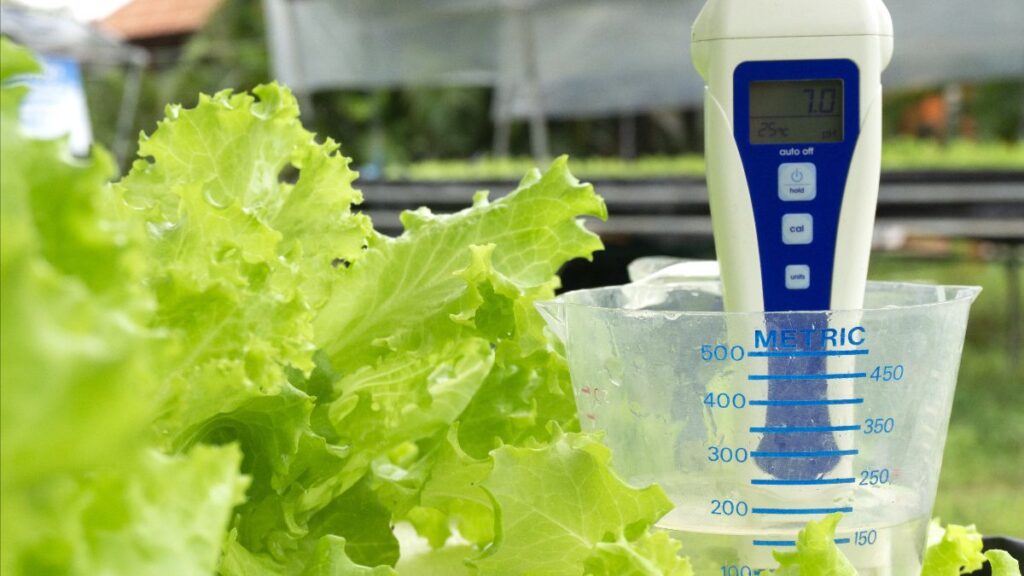
Soil Mixes:
Most greenhouse soil mixes are primarily peat and perlite-based. A good soil buffers pH is porous (provides air to the roots), and holds water well. All commercial mixes are closer to one another than you might think. Don’t agonize about which one is the best to use. Just choose a good quality commercial mix (I strongly recommend Pro-Mix or Berger) for your general growing purposes and become familiar with it. Be sure you rotate your soil and use it within 8 months after receiving as the wetting agent in all soils will wear out over time. The purpose of potting soil is to stabilize the plant and provide a medium from which plants can draw water and nutrients. Other than a small starter charge of fertilizer, artificial soil mixes offer no nutritional value for your plants. This will need to be added. Your commercial soil mix will have a pH of about 5.8 to 6.0 which, due to its buffering abilities, help to keep the pH near the level your plants need in order to take advantage of the nutrients made available to them.
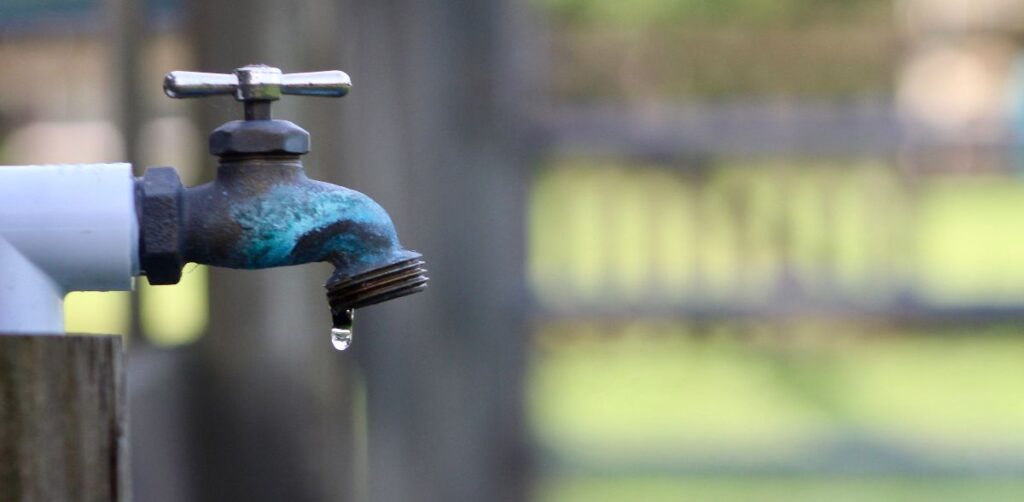
Water:
All plants need water. You should know your water to the point where you are at least aware of its pH and EC, allowing you to then formulate a fertilizer regimen for your crops. Most municipal waters have a pH of about 7.6 to 9 which is alkaline due to the chemicals they add to slow corrosion of distribution pipes. The pH of your soil and water and how they are related is very important. Again, the fertilizer and soil companies strive to make growers successful by making their products work towards maintaining a soil pH of 6 which is ideal for most plants. You not need to concern yourselves with the complexities of the chemical interactions that take place in the soil. You just need to target that ideal pH so your plants do what they’re programed to do. How do you do that? Easy, use a good quality, peat based growing mix and try to fertilize with each irrigation which will help keep you pH down in that plant friendly zone. It’s when you use clear water out of the tap that the pH tends to drift up to where nutrients, even though present in the soil, cannot be utilized by the plants.
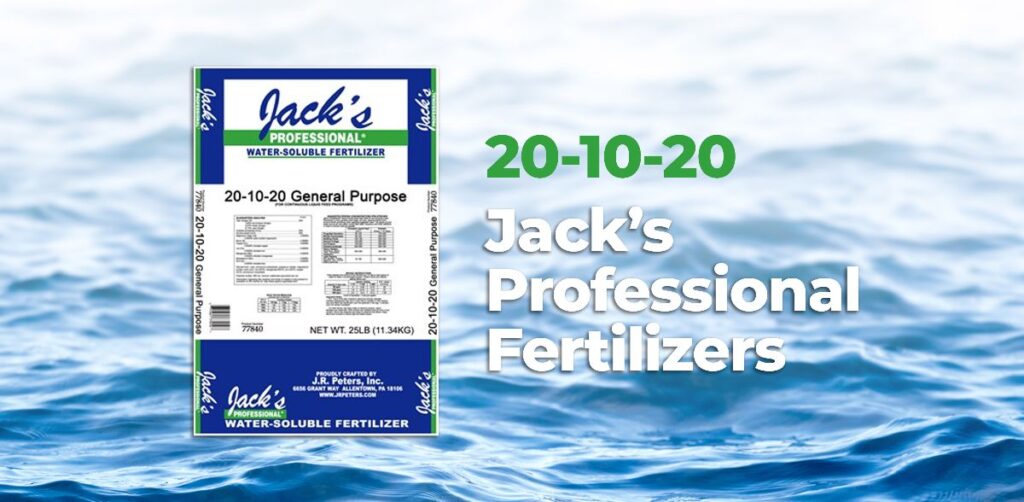
Fertilizer:
Please don’t underestimate the importance of using a proper fertilizer. Just like people, plants need to be fed. Essential to their well-being are the macronutrients: Nitrogen (N), Phosphorus (P) and Potassium (K). Also necessary are secondary nutrients such as Calcium, Magnesium and Sulphur as well as micronutrients which include Zinc, Iron, Manganese, etc. These nutrients are also needed in the correct concentration and ratio to one another in order for plant growth to be optimal. As complicated as this may seem, fertilizer companies have already done all this work and have put the results into handy 25# bags for us to pour into our stock tanks and feed our plants. If used at each irrigation, your pH should remain relatively stable throughout the length of the crop and plants should be well nourished.
If you use just tap water to irrigate your plants, this will challenge the buffering capacity of your soil and the pH will eventually creep up to where you’ll notice nutritional issues with spring annuals and many other plants. That interveinal chlorosis on your petunias and calibrachoas is the first indicator that your pH is creeping up to where some secondary and micronutrients may not be available such as (in this case) iron. Use commercial fertilizers that have all the nutrients needed for your crop and that help buffer your water to keep your pH in that safe zone. In my opinion, 20-10-20 is the best general purpose formulation unless water tests have indicated otherwise. This is a high nitrate based nitrogen fertilizer which is much better for growing in peat based media than the too often used 20-20-20 which is high in ammonium and urea nitrogen. The 20-20-20 works well for keeping things green on a maintenance level but not for growing, especially in a peat based soil mix.
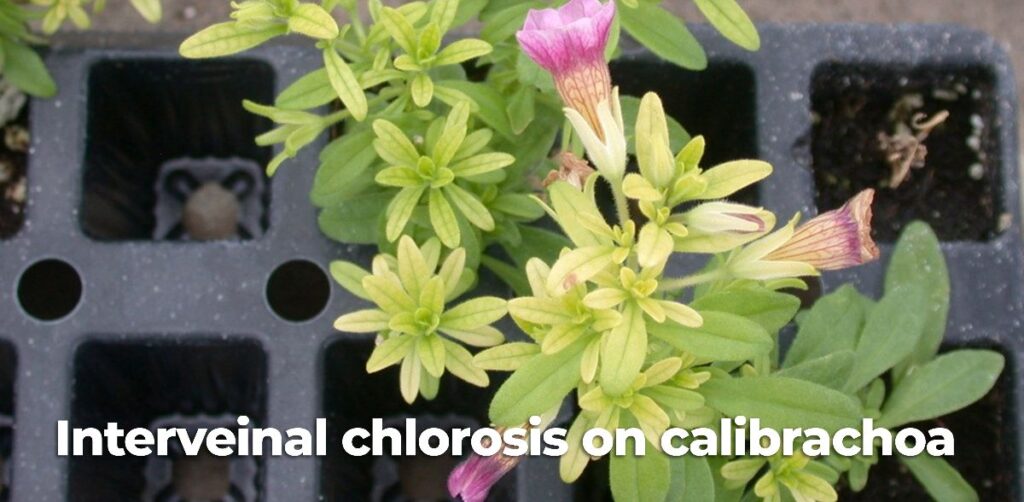
So, how do you know what your soil pH is? The best method is to use a pH meter. pH pens are very inexpensive and give very accurate readings. You can also get a ballpark figure by measuring the pH of the water (leachate) that drains from the bottom of your pot. Collect the leachate and then use the pH strips for aquarium or pool to find out if your pH is in the target range. It is much better to have an actual pH meter that, if used on a routine basis, can show changes in the soil pH which then allows you to prevent a problem rather than treat it. This can also make for a great class project.
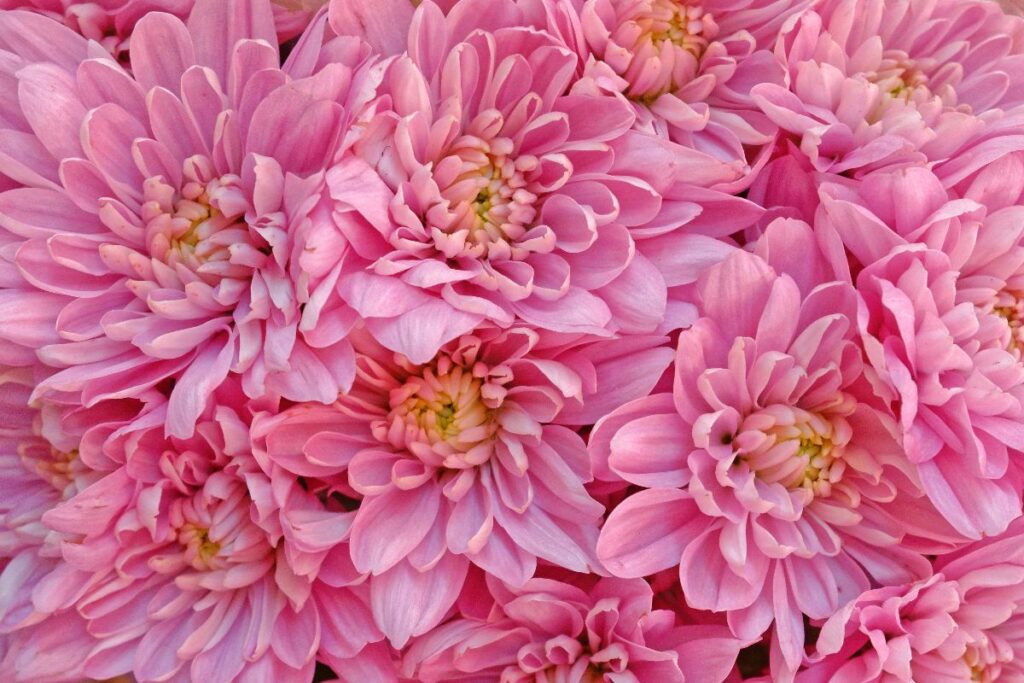
Mum Primer:
For those of you growing mums, your rooted cuttings should be arriving this month. Here are just a few quick pointers to get the most out of your crop. Remember that if things have gone well for you with past crops, please don’t shift and do anything drastically different because of something I mention here.
- Plant liners immediately upon receiving. For largest plants, schedule them to arrive the first two weeks of June.
- Use a bark mix or one that has a coarse peat moss and is very porous. Porosity and air to the roots is important. The soil needs to both hold water and drain well.
- Growing mums outdoors is best. If you see stress or slight burning of the leaves after planting they’ll quickly cover up with new foliage
- Fertilize immediately and with each irrigation after planting. Mums are heavy feeders. Use 20-10-20 early in crop. You can finish with this formulation or you can switch to a 22-5-16 Mum Feed later in crop which hardens off the crop prior to sale and keeps the necessary iron and other micronutrients available to the crop even if the pH rises during the crop cycle.
- Keep feeding throughout crop with each irrigation if at all possible.
- Avoid using sprinklers. Drip irrigation is best to prevent foliar diseases from developing.
- Never let mums dry out or wilt. This stress will weaken them, risking stem breakage later in the crop. This stress can also cause premature buds and flowering.
- Most mums today don’t require pinching. For them to do their best they need to be pushed with heavy fertilization to promote lateral branching leading eventually to a well-rounded finished plant. Your fertilizer protocol in the early half of the crop will help determine the final size of your crop.
- Be vigilant and watch for caterpillars and aphids. Marathon is a good systemic preventative for both.
Disclaimer!
If you’re doing something different in your greenhouse than is shared above and all is going well, please don’t change. Perhaps modify, experiment and consider but be cautious before changing a good thing. Successful growing is the result of many, many variables. Some we have control over and some we don’t. The above is only meant as a guide or checklist prior to the upcoming growing season.
Questions/Concerns?
If you need help or elaboration on any of the above topics, please feel free to contact us. If you need a source for or advice on annuals, perennials, pH or EC meters, soil or anything else, I can help you with that as well.
Happy Growing!

Mike Hellmann
Plants and Cuttings Manager

One Response